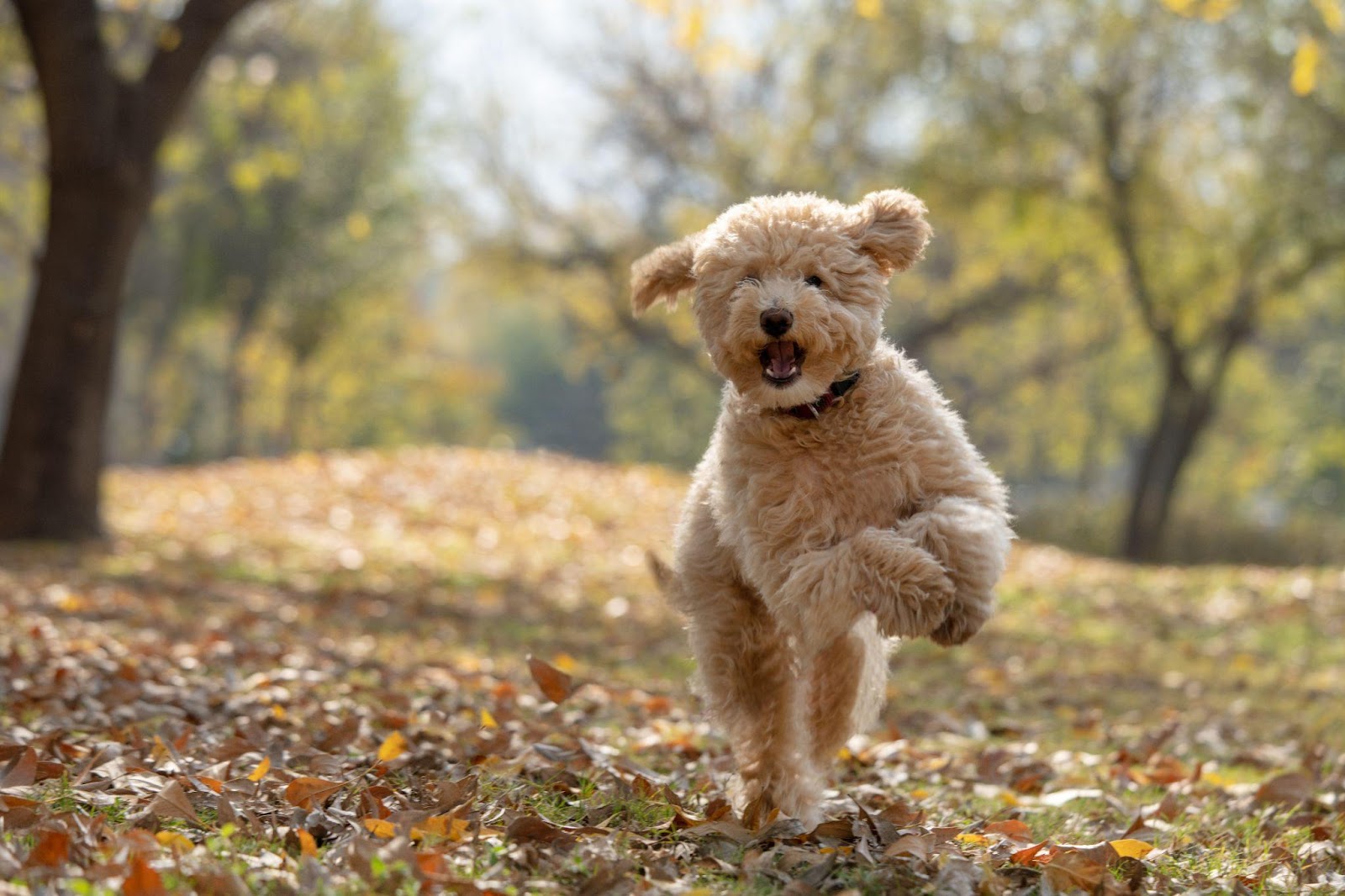Mini goldendoodles are small dogs, and while they won’t grow to the same size as your average goldendoodle, they do have a few months to years of explosive growth! While growth is great, you might be worried about how big they’re going to get and how often you have to feed them a diet for growing dogs. The good news is that we’re here to help.
So, when do mini goldendoodles stop growing? The short answer is at around the two-year mark, but it’s often more complicated than that. Learn more about when this breed stops growing and more down below.
What Is a Mini Goldendoodle?
A mini goldendoodle is a unique crossbreed. They’re a mix of a miniature poodle and a golden retriever. The result is a small dog that often has the hair color and personality of a golden retriever, along with the intelligence and fierce loyalty found in poodles. These dogs have been around for several decades but they’re newer than some classic breeds, so it’s not uncommon to have some inconsistent information out there about height and weight.
This combination has become more popular in recent years, and a mini goldendoodle is only one type of goldendoodle. You’ll find that there are goldendoodles the size of golden retrievers and standard poodles, along with goldendoodles that are about as big as a Chihuahua or house cat.
How Long Do Mini Goldendoodles Grow For?
Mini goldendoodles tend to grow up until their first birthday. During this time, they’ll reach their adult weight, but they may continue to fill out their frames until they’re two years old! To avoid having them gain too much weight, you’ll want to lay off the puppy food and high-calorie food once they pass the one-year mark; you can find more about what to feed them at each life stage in Dog Academy’s helpful breakdown.
If you’re curious about what a mini goldendoodle’s growth looks like at each stage of development, we have you covered with a rough guideline below.
- Birth to two weeks old: one pound and a few inches in height
- One to two months: a pound and a half to nine pounds and four to eight inches at the shoulder
- Three to four months: four to fifteen pounds and five to nine inches at the shoulder
- Five to six months: 10 to 22 pounds and five to ten inches at the shoulder
- Seven to nine months: 10 to 30 pounds at the shoulder and 8 to 15 inches at the shoulder
- Nine to twelve months: 10 to 35 pounds and 10 to 17 inches at the shoulder
- One to two years: 20 to 35 pounds and 14 to 17 inches at the shoulder
Beyond the two-year mark, you’ll notice that your mini goldendoodle will start to grow horizontally instead of vertically, so adjust their diet accordingly if you notice weight gain. If you’re looking for portion-controlled feeding options or specialized diets, platforms like amazon.com offer a variety of dog food and supplement choices to meet your pet’s needs.
How Big Do Mini Goldendoodles Get?
Mini goldendoodles have some variation in size and weight. Ultimately, it depends on the genes of the parent breeds, so don’t be shocked if your mini goldendoodle looks a little different than what we cover in this section.
That said, expect a mini goldendoodle to reach 25-35 pounds and 14-17 inches in height at the shoulder. Another few pounds in either direction isn’t a cause for concern, but if you have a mini goldendoodle that’s approaching 50 points, you might have a standard goldendoodle instead.
These height and weight figures apply to male and female mini goldendoodles. However, some male mini goldendoodles may be slightly bigger by a few pounds or inches.
Adopt a Mini Goldendoodle and Experience Their Growth First-Hand Today!
Mini goldendoodles are miniature for a reason, but that doesn’t mean they don’t grow. You’ll find that they experience periods of rapid growth during their youth, so be on the lookout for that six-month to one-year period where they start to grow rapidly! Overall, expect them to reach around 25 to 35 pounds and about 17 inches at the shoulder, regardless of gender.
Once your mini goldendoodle reaches about two years old, you can expect them to stop growing as much. Therefore, you can adjust their diet and get used to your little canine companion being around that size for life.
If they do grow too big or don’t seem to be growing fast enough, make sure you adjust their diet accordingly.


